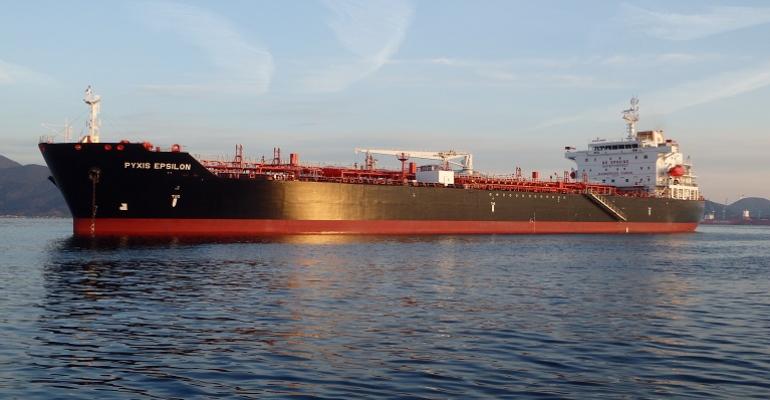For investors in listed tanker “names”, the changes have brought outsize gains- especially notable as broader market indices have stumbled. The insights from analysts following the listed stocks provide commentary that not only describes the present, but also looks towards possible future developments.
One instant beneficiary of the trade re-shuffling has been the refined products sector of the market, particularly in diesel fuel and petroleum. Greg Lewis, who covers shipping shares for institutional investment house BTIG, recently wrote that: “Even before Russia's invasion of Ukraine, product tanker rates were starting to improve on the back of recovering oil demand and slowing fleet growth.” In his report, looking specifically at shares of Scorpio Tankers Inc. (NYSE listed as STNG), adding that: “Russia's invasion of Ukraine has accelerated the product rate recovery, driving oil products dislocations around the world.”
With investors looking ahead, the price of STNG shares has more than doubled, actually up 109%, since the beginning of the year, while the broader S&P 500 index has lost around 14% of its value. The company, which had “raised liquidity”, a polite way of saying that it sold vessels - mostly LR1s - to keep afloat, as it struggled (along with others) during the past year and a half, is on the verge of a remarkable turnaround.
In its recent release of Q1 2022 results, Scorpio Tankers’ management explains that MR tankers earned $16,000 per day trading during January through March. In Q2, so far with about 42% of days fixed, its MRs are making $30,000 per day. With LR2 tankers, the result is almost as impressive with a jump from $14,500 per day to $24,300 per day, with 44% of Q2 days fixed.
Another analyst, Magnus Fyhr, from the H.C. Wainwright brokerage - not so well known, but they’ve been in business since the 1860s - has initiated coverage of the much smaller Pyxis Tankers (OTC listed as PXS), described as a “micro-cap product tanker pure play”.
In his late April report, Fyhr notes that: “The product tanker sector has historically benefited from market disruptions, where inefficiencies and dislocations typically stimulate long-haul trades and ton-mile demand. In addition, we believe structural shifts in the global refinery sector should have positive implications for product tanker demand over the next few years as refinery capacity is being added closer to the well-head and further away from consuming regions. Finally, with the orderbook at historical lows and stricter environmental regulations creating uncertainties regarding future propulsion technologies, we believe ordering activity should remain at low levels. This coupled with an aging fleet should, in our view, support minimal fleet growth over the next few years resulting in a tighter supply/demand balance and higher spot rates.”
Learn more about the impact of conflict in Ukraine from The Maritime Podcast
The appeal of PXS is that its five vessel MR fleet has tremendous upside exposure to the boom in the MR rates. Three of the vessels have been trading spot, and two are set to come off charters during mid-2022.
For perspective, H.C. Wainwright’s Fyhr estimates that PXS, which outsources technical management but keeps commercial management in-house, has a highly economical cash breakeven level of around $12,800 per day, excluding amortization of debt.
In an environment of $30,000 per day charters, the cashflow potential is enormous. His report on PXS estimates cashflow yields compared to bigger and better-known owners; with PXS’s more than 40% estimated cash flow yield comparing very favorably with levels around 20% for STNG, for Torm and Ardmore.
Copyright © 2024. All rights reserved. Seatrade, a trading name of Informa Markets (UK) Limited.
Add Seatrade Maritime News to your Google News feed.  |

